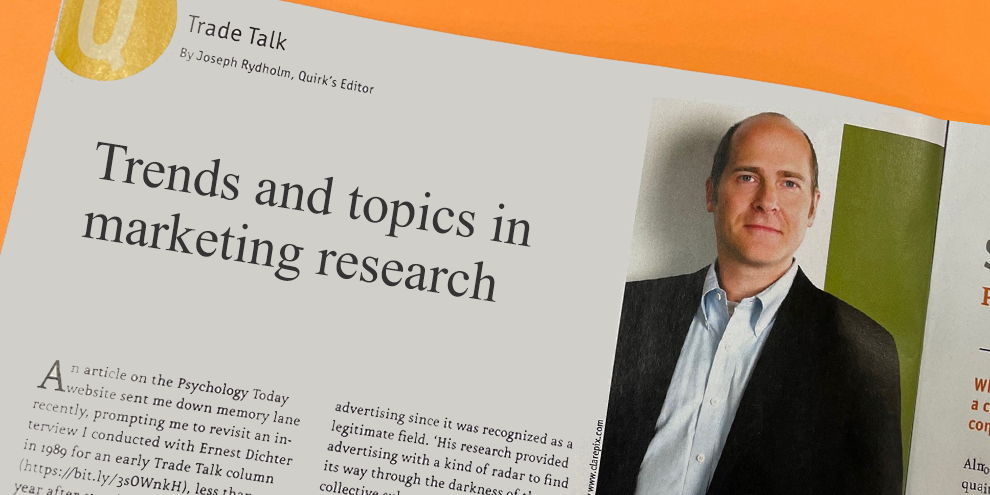We’ve all been there. You settle into your chair at a research-industry conference session, excited to hear a researcher from a well-known CPG firm detail an interesting case study. They speak for a few moments and then turn things over to their vendor partner, who promptly steers the presentation away from the case study and toward a sales pitch, subtle or otherwise, for the firm’s “suite of solutions.” If you’re lucky, the client researcher gets to come in for a few minutes at the end to wrap things up.
As conference organizers, we worry about this kind of Trojan Horse situation. For prospective presenters at The Quirk’s Event, we stress repeatedly that they have to adhere to our Q-Mandments, one of which states: “During no part of your presentation should you ever sell your company, services or products.” Most speakers play by the rules. But some folks just can’t help themselves. Given the floor and a captive audience of potential customers, the urge to sell takes over and objectivity goes out the window.
You’d think that simple self-preservation would kick in and prevent the speaker from delivering a sell job to an audience that is expecting just the opposite. After all, who wants to be the one responsible for turning a bunch of nice people into an angry mob?
Thankfully, in looking over the data from our post-event surveys from this year’s Quirk’s Event in February, I didn’t find many complaints about overly promotional sessions. But there were some.
Vendors, if you won’t listen to me on this, maybe you’ll listen to some of your potential clients, as taken from our post-survey comments:
“Some of the sessions were too promotional. Once or twice I felt like I was at a timeshare presentation. That was the exception, since most sessions were extremely useful.”
“I went to a session or two in which the speakers really spent more time describing their product than the practice I could use in my own work. Please don’t let sessions be sales pitches. If I can’t transfer the practice without buying their product, the session is worthless to me.”
“I felt some presenters provided too much information about their company in the beginning (wasted time) versus presenting their content.”
“No quality control over some of the presentations – the research companies very often felt compelled to ‘get their money’s worth,’ in the process delivering overt and ham-fisted sales pitches that turned me off and wasted my time. [Redacted company name] was awful this way, spending 17 minutes of a 30-minute session talking about what they do instead of presenting research that sells what they do.”
In other words, resist the urge to sell. Just don’t do it.
Want more advice? Stick to the stated focus of your talk. Know that in most cases, the audience is there to hear from your client. If you have to share the podium, make it at least an even split. If the client can’t go into great detail on the case study, make that clear at the outset (or consider finding a different client to co-present with!) and do your best to replace the missing content with related and complementary examples that give the attendees some useful takeaways.
If you must mention the proprietary tools or methods that were used during the project in question, make it brief. Invite interested audience members to seek you out after the talk if they want more detail.
Remember, a successful case study in which a respected consumer-facing firm used your company’s tools and expertise to address a critical business need is the best kind of sales pitch: one that doesn’t feel like a sales pitch at all.
